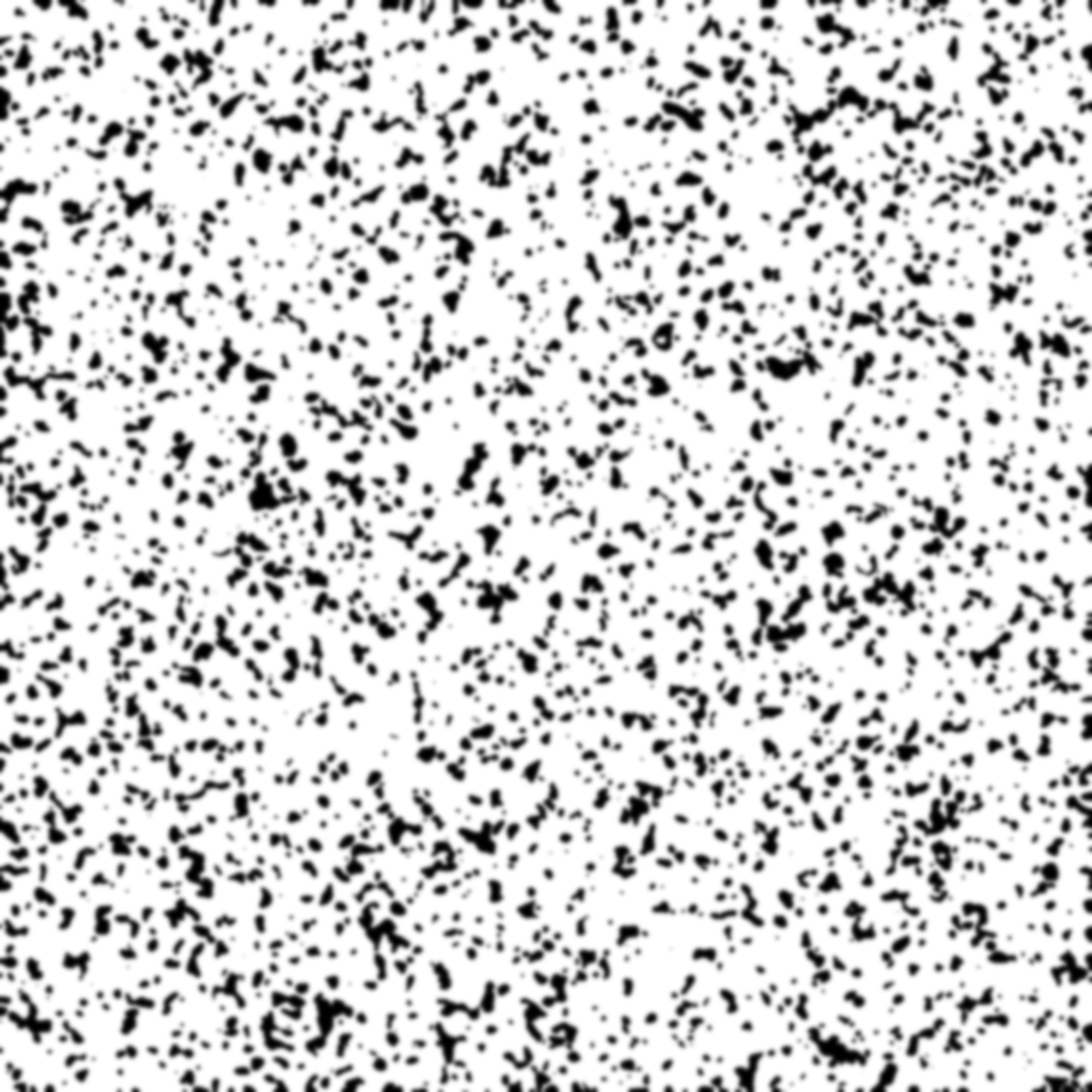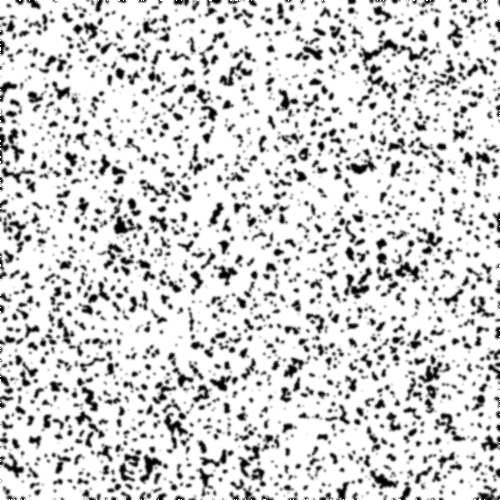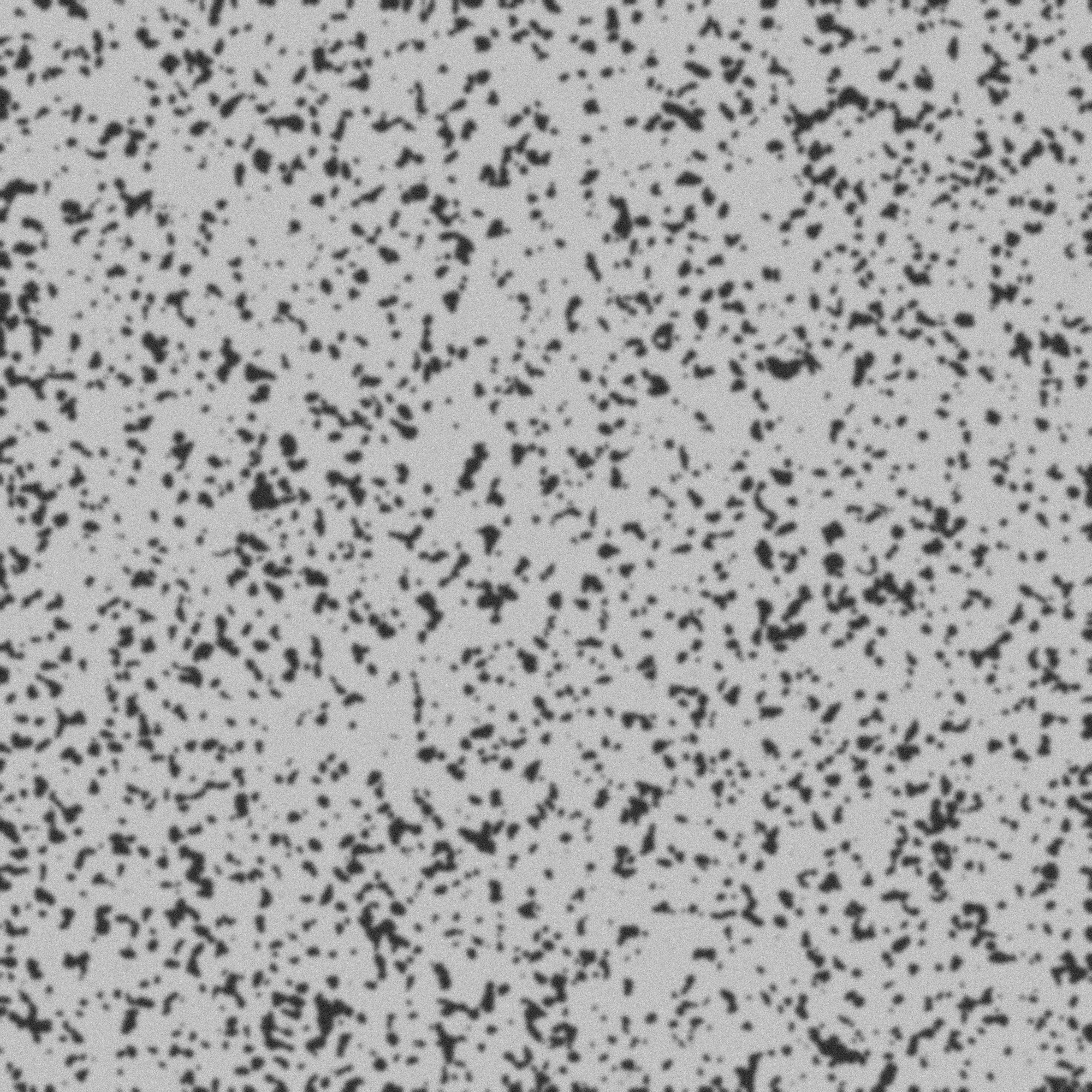Virtual experiment¶
Let’s now go through how you perform virtual experiments using the virtual lab package.
First, we need to import the tools:
import muDIC as dic
from muDIC import vlab
Speckle image¶
We will first make a high resolution speckle image, which we later will deform and downsample. First we declare variables for later use:
image_shape = (2000,2000)
For making speckle images, the toolkit comes with several algorithms and we will use one called “Rosta”:
speckle_image = vlab.rosta_speckle(
image_shape,
dot_size=4,
density=0.32,
smoothness=2.0)
If you want further explaination on the arguments, you can look in the theory section or in the API docs.
The speckle image now looks like this:

Image deformer¶
Let’s now make an image deformer which stretches the image according to a deformation gradient. Firts, we define the deformation gradient:
F = np.array([[1.1,.0], [0., 1.0]], dtype=np.float64)
We then make an image deformer which uses this deformation gradient:
image_deformer = vlab.imageDeformer_from_defGrad(F)
- image deformer can now take an image as argument and returns a list of deformed images::
- deformed_speckles = image_deformer(speckle_image)
Downsampler¶
If we want to mimic the artefacts caused by camera sensors, we can downsample the images. I order to do this, we instantiate a downsampler:
downsampler = vlab.Downsampler(image_shape=image_shape,
factor=4,
fill=0.8,
pixel_offset_stddev=0.1)
This object can now be called, returning a downsampled image:
downsampled_speckle = downsampler(speckle_image)
A downsampled speckle would look like this:

Noise injection¶
We can now add noise according to noise model of our choice like this:
noise_injector = vlab.noise_injector("gaussian", sigma=.1)
By passing an image to this function, noise is added. By using the extreme value of sigma = 0.1, the resulting image would look like this:

Virtual experiment¶
These components can now be composed in a script, or we can use the virtual-experiment fascility to make an image stack directly:
image_stack = vlab.SyntheticImageGenerator(speckle_image=speckle_image,
image_deformer=image_deformer,
downsampler=downsampler,
noise_injector=noise_injector,
n=n)
If we as for a given image in the stack, the results from the whole pipeline will be returned:
image_five = image_stack[5]
and would look like this:
